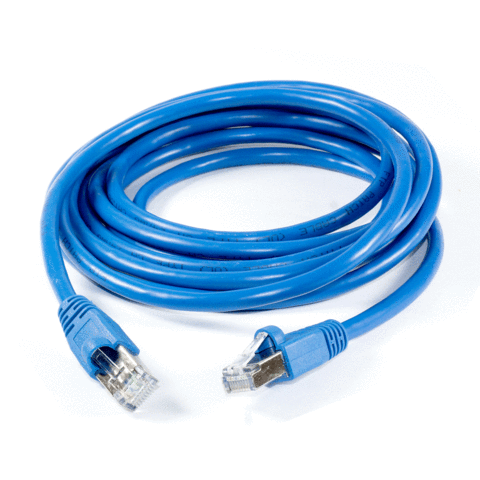What Can An Ethernet Cable Be Used For?

An Ethernet cable is a standard wire that connects a computer to a network. They are explicitly designed to boost easy communication between electronic devices. These electronic devices could either be personal computers, scanners, printers, or fax machines. Ethernet cables enhance communication between your personal computer and the internet servers. It provides stability to your internet connection; this implies that you can upload and download files, and can work all day without stress.
Ethernet cables are used to carry broadband signals between a modem, router, and computer, as well as other wired internet devices that you have in your house, for example, laptops and gaming consoles. Ethernet cables are almost similar to landline phone cables (though they have more wires and are thicker).
As a piece of technology recognized internationally, Ethernet cable is supported by all manufacturers of computers and can be virtually used with any hardware, excluding a small category of ultramodern laptops.
The following are a few things you should know about Ethernet cables.
How To Connect Ethernet Cables
Ethernet cords connect two devices using an Ethernet port on each of them. With the use of a modular plug, the cable is locked firmly. Connecting these devices using Ethernet cables requires being patient; this is because modular plugs are fragile and easily tend to break. The initial thing to do is to firmly hold the cable, turning it so the plastic plug will face upwards. Plug the cord into the Ethernet port of your computer.
A computer comprises of many ports, but usually, Ethernet ports are much bigger than other ports. Push the cable firmly into the ports till the plugs lock into space. When pushing the cable into the port, you need to be careful to ensure that you do not puncture the modular plug. When you are done inserting the plug, you will have to check the internet to see if it is working. If it is not, you should check well if the cable was correctly installed in the internal port and on your computer. The connection procedure will not take you more than five minutes, and you’re okay to go. You can use the internet to transfer large files and also download files without experiencing interruptions.
Benefits
Speed
Unlike what a lot of people think, an Ethernet network is fast. This implies that ethernet cables could be used in connecting multiple computers in various homes and allows one to enjoy surfing the internet at a stable speed. Ethernet cable network connections help to transfer larger files at a faster pace within a short period. It also comprises a steady speed because cables are not exposed to breakdowns like the case of other wireless devices and modems.
Availability
These cables are always available and obtainable. Compared to other types of cables such as fiber and coax, Ethernet cables are quite cost-effective. You can find a replacement easily if you break your cable accidentally.
Simplicity In Installation
Ethernet cables are simple to install because they come in varying forms and shapes. With the different forms and shapes, you can select the particular size ideal for your needs. For instance, if you purchase a router or hub from one of the local stores, you can insert the cable into each of the ports on the hardware device easily. Computers come with a built-in Ethernet network adapter; this implies that you can insert cables easily into your computer even if you are an amateur in network administration.
Limitations Of An Ethernet Cable
Single Ethernet Cables have a maximum distance capability, which means the cable has a higher limit as to how long it would function before there is an attenuation (signal loss). These problems arises due to electrical resistance of long cables influences their performance.
The two ends of the cable should be far enough from outside electrical interference to prevent interruptions and very close to each other to quickly receive signals. But this precaution does not restrict the size of the network, because devices like hubs and routers can connect several cables on the same network. “Network diameter” is the distance between the two devices.
The max length of a category 5 cable before the occurrence of attenuation is 324 ft. Cat6 cables can run up to 700 ft. These cables could be longer and might suffer from loss of signal, mostly if they pass through an extensive electronic appliance.
Conclusion
The length of ethernet cables is a bit different for thick Ethernet cables (known as 10Base5) or thin Ethernet cables (known as 10Base2). The latter cable type should be no longer than 600 ft., while the former cable type can attain lengths of about 1640 ft. However, bear it in mind that short cables might suffer from reflection.